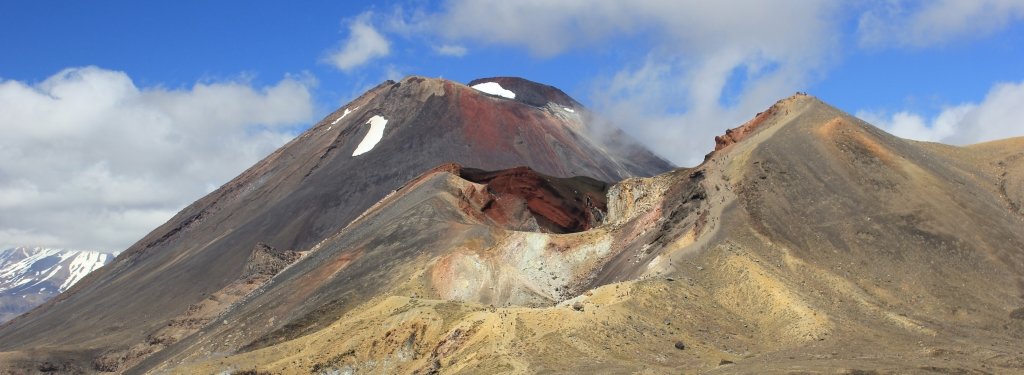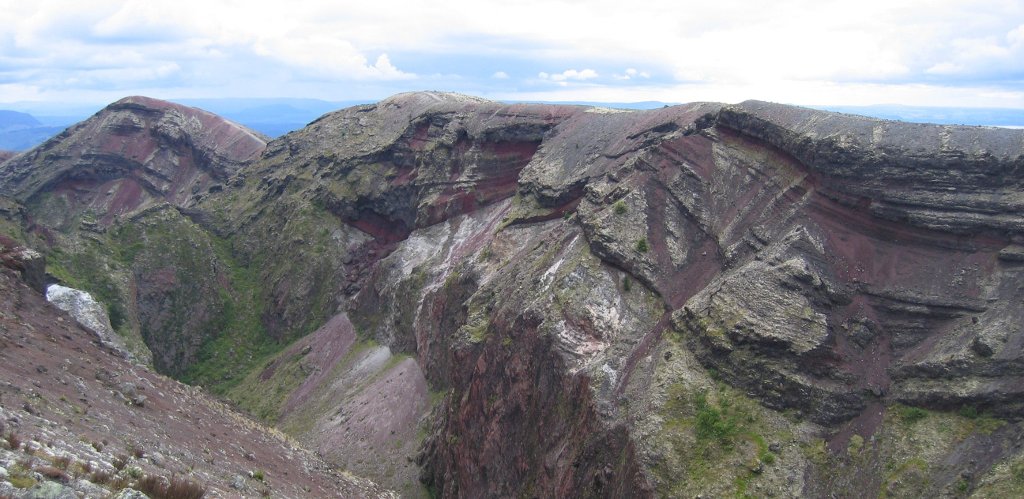Exploring Eruptions: Research on Volcanoes Could One Day Help Save Lives

Geology takes the long view. It is a field, after all, in which the pace of change spans billions of years. John Lyons, however, is interested in geological events that happen at a faster rate. So the recent graduate of Michigan Tech’s PhD program in geophysics has found a compromise: he studies volcanoes.
“Active volcanoes compress geologic time. You can sometimes see birth and destruction at an almost human timescale,” says Lyons, who is now doing postdoctoral work at the Instituto Geofisico–Escuela Politécnica Nacional in Quito, Ecuador.
It’s an apt setting for Lyons; the small, South American country is home to a number of the world’s most active volcanoes. In 2006, for example, at least seven people were killed and three villages were demolished following the eruption of Tungurahua (“Throat of Fire”), located eighty miles southeast of Quito.
In the future, as more people worldwide live on the flanks of active volcanoes, and in the valleys surrounding them, the risk of death and destruction will increase. That’s why Lyons is investigating volcanoes’ eruptive behavior and the internal systems that feed their geothermal power.
Specifically, Lyons uses sophisticated instruments, which sense ground motion near volcanic sites, to detect the movement of gas and magma beneath the Earth. The resulting information, which Lyons analyzes out of harm’s way, is then compared to satellite data that shows gas and thermal emissions at the planet’s surface.
The goal: to understand the characteristic signals that volcanoes produce during different stages of activity. Ultimately, this knowledge could be used to identify abnormal events and help forecast eruptions.
Ecuador, though, isn’t the only place where Lyons has put his expertise to work. During summer 2010, just months after the devastating earthquake and tsunami in Japan, he worked with Professor Mie Ichihara of the Earthquake Research Institute at the University of Tokyo.
There, through the National Science Foundation’s East Asia and Pacific Summer Institutes program, Lyons built a model of a volcanic conduit, complete with magma-like fluid (albeit at room temperature). Using the model, the researchers were able to generate the same tremor signals that had been recorded earlier at Guatemala’s Volcán de Fuego ("Volcano of Fire")—data that hadn’t been explained by other geophysicists.
While in Japan, Lyons also visited communities affected by the tsunami. “It was a sobering reminder that, while Earth science, geophysics, and natural hazard studies have made incredible advances in the past century, there is still a great deal that we don't know about how the Earth works. We have lots of work to do,” he says.
Michigan Technological University is an R1 public research university founded in 1885 in Houghton, and is home to nearly 7,500 students from more than 60 countries around the world. Consistently ranked among the best universities in the country for return on investment, Michigan's flagship technological university offers more than 120 undergraduate and graduate degree programs in science and technology, engineering, computing, forestry, business, health professions, humanities, mathematics, social sciences, and the arts. The rural campus is situated just miles from Lake Superior in Michigan's Upper Peninsula, offering year-round opportunities for outdoor adventure.




Comments